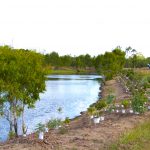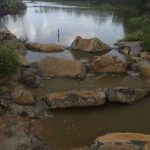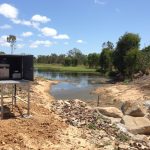Bakers Creek System Repair Site
Water quality studies over the past decade have shown that regions with sugarcane as a major land use export high concentrations of dissolved inorganic nitrogen and some herbicides (particularly ametryn, atrazine, diuron and hexazinone). To halt and reverse this decline in water quality, several federal and state government funded programs have been implemented to improve…
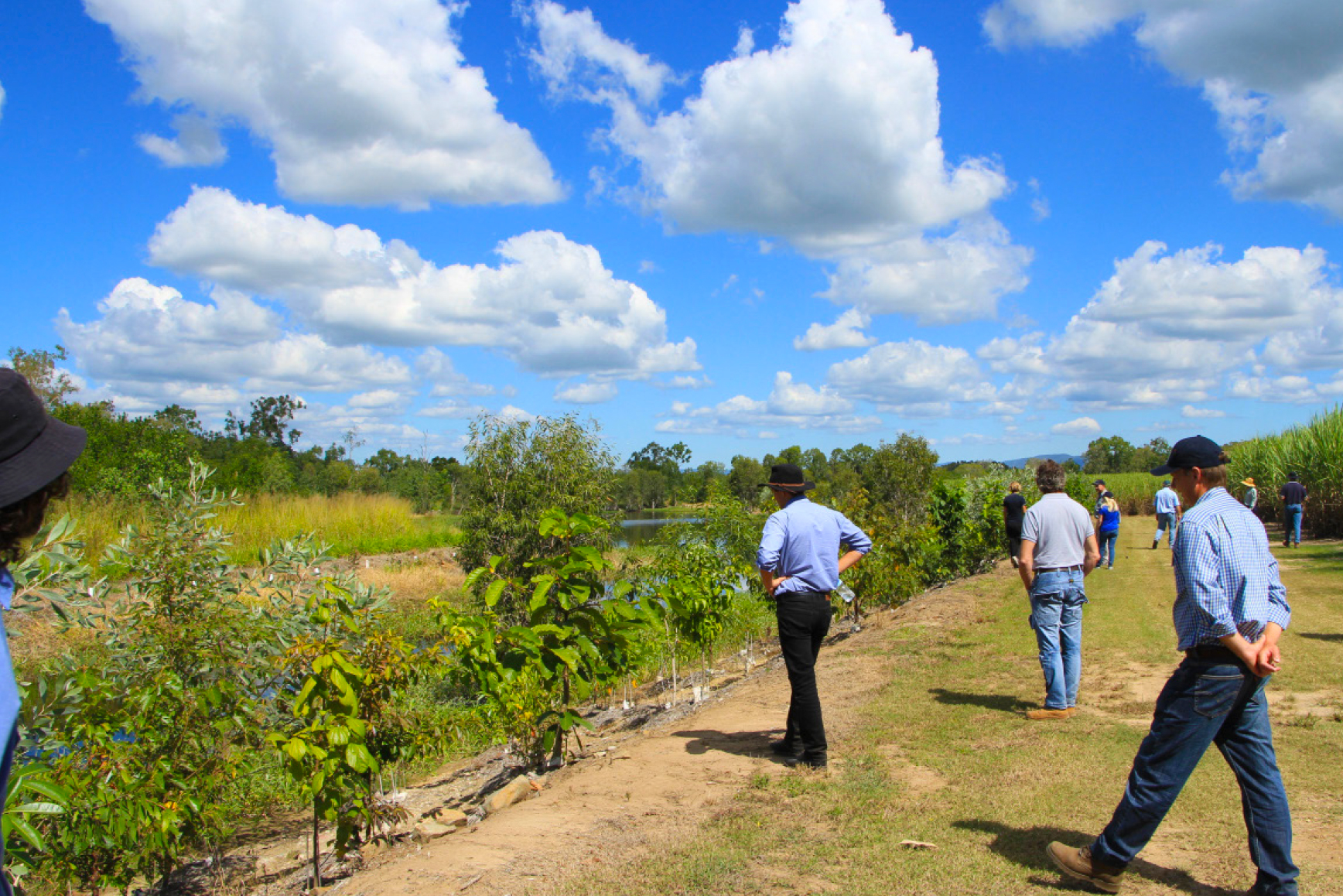
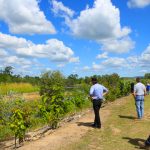 Water quality studies over the past decade have shown that regions with sugarcane as a major land use export high concentrations of dissolved inorganic nitrogen and some herbicides (particularly ametryn, atrazine, diuron and hexazinone). To halt and reverse this decline in water quality, several federal and state government funded programs have been implemented to improve land management practices and monitor the results.
Water quality studies over the past decade have shown that regions with sugarcane as a major land use export high concentrations of dissolved inorganic nitrogen and some herbicides (particularly ametryn, atrazine, diuron and hexazinone). To halt and reverse this decline in water quality, several federal and state government funded programs have been implemented to improve land management practices and monitor the results.
One such program, the Australian Government’s Reef Programme, is a five year investment in systems repair and urban water quality on-ground grants. One project funded under this program in the Mackay Whitsunday region is the Bakers Creek (Cowley’s Road) system repair site.
At this project site, inlet and outlet water quality (sediment, nutrients and herbicides) concentrations were measured during the 2014/15 wet season. Rainfall during the season was less than half of the long-term average, and resulted in only two rainfall runoff events being monitored.
This was the first wet season after construction of the site, and revegetation had not occurred. As a result, the sediment concentrations at the outlet (13-178 mg/L) were slightly higher than the inlet (4-107 mg/L), but concentrations were similar to those measured from other small sugarcane catchments in the Mackay region. Concentrations of nitrogen species responded differently between the two events, presumably due to the interaction between inlet water and the wetland water quality prior to Event 1 (dilution, release of organic material, etc.). In the much larger Event 2, there was little difference between inlet and outlet water quality for nitrogen (except a reduction in ammonia-N concentrations) and phosphorus.
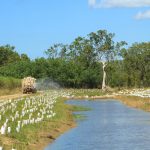 Of those herbicides detected (particularly atrazine, diuron and hexazinone), outlet concentrations during Event 1 were at least half of those detected at the inlet. This may simply be due to dilution through the system for this relatively small runoff event. Concentrations in Event 2 were much higher than those measured in Event 1 (except diuron), with small reductions in the range of concentrations (and median) measured between the inlet and outlet. The results from the ms-PAF assessment show that, of all the samples collected, at least 91% of photosynthetic species were potentially affected. The median ms-PAF value at the outlet (95%) was slightly lower than the inlet (97%) for these two runoff events. These results highlight that the assessment of mixtures of herbicides are critical to understand the potential impact of herbicides on aquatic ecosystems.It is recommended that monitoring continue in future wet seasons to determine the full benefits of improvements in water quality at this site as the components of the site become established and the site is revegetated.
Of those herbicides detected (particularly atrazine, diuron and hexazinone), outlet concentrations during Event 1 were at least half of those detected at the inlet. This may simply be due to dilution through the system for this relatively small runoff event. Concentrations in Event 2 were much higher than those measured in Event 1 (except diuron), with small reductions in the range of concentrations (and median) measured between the inlet and outlet. The results from the ms-PAF assessment show that, of all the samples collected, at least 91% of photosynthetic species were potentially affected. The median ms-PAF value at the outlet (95%) was slightly lower than the inlet (97%) for these two runoff events. These results highlight that the assessment of mixtures of herbicides are critical to understand the potential impact of herbicides on aquatic ecosystems.It is recommended that monitoring continue in future wet seasons to determine the full benefits of improvements in water quality at this site as the components of the site become established and the site is revegetated.
Client – RCL for Australian Government
